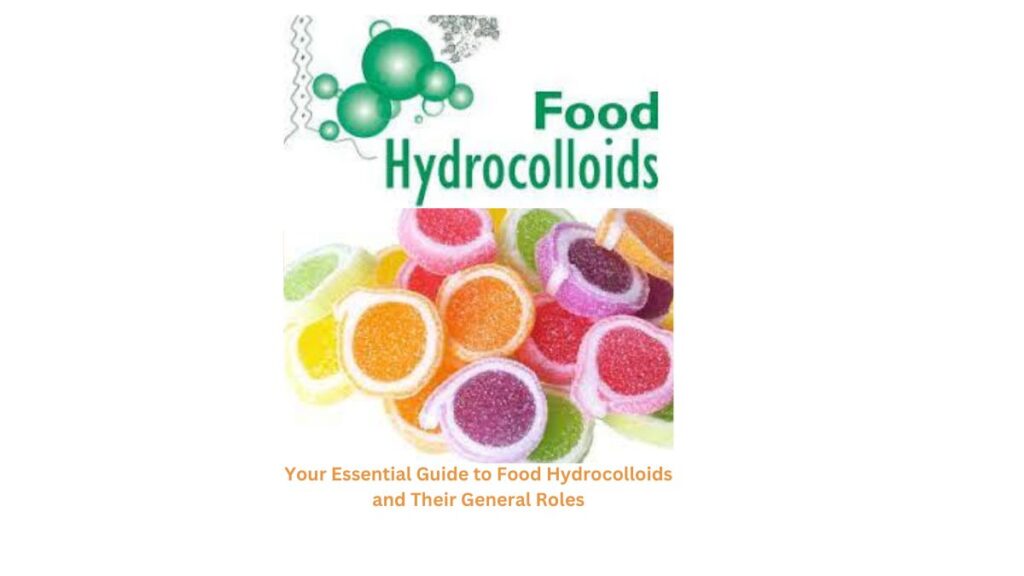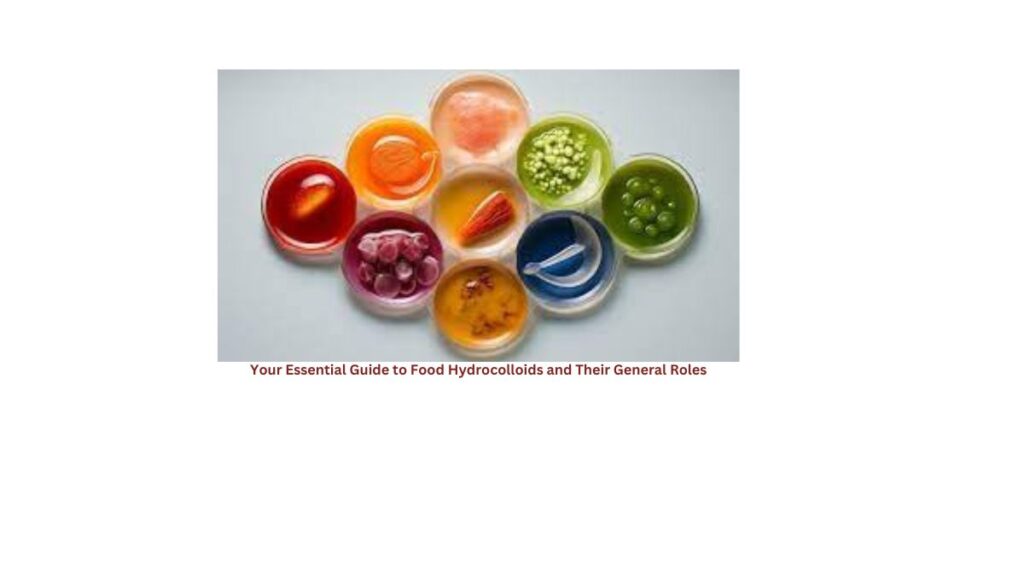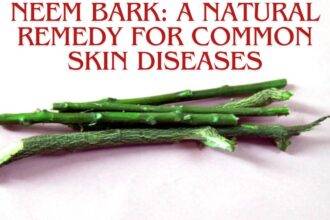Introduction:
“Navigating the Additive Spectrum: Your Essential Guide to Food Hydrocolloids and Their General Roles”

In the ever-evolving landscape of food science, understanding the crucial roles of additives is key to creating palatable and innovative culinary experiences. Among these additives, food hydrocolloids play a pivotal role, offering a spectrum of functions that enhance texture, stability, and overall quality. In this comprehensive guide, we’ll delve into the essential aspects of food hydrocolloids, unraveling their general roles within the additive spectrum.
Section 1: Unveiling the World of Food Hydrocolloids
In this introductory section, we’ll embark on a journey to unveil the fascinating world of food hydrocolloids, exploring their origins, classifications, and fundamental characteristics.
Origins and Nature:
Food hydrocolloids are a diverse group of substances derived from natural origins, often extracted from plants, seaweeds, or microbial sources. These compounds exhibit unique hydrophilic (water-attracting) properties, making them invaluable in various food applications.
Classification Overview:
To navigate this intricate world, it’s essential to understand the classification of food hydrocolloids. Broadly categorized into polysaccharides, proteins, and other complex structures, these additives serve as multifunctional ingredients in the food industry.
Common Types:
Within the realm of food hydrocolloids, several well-known types take center stage. Examples include agar-agar, pectin, carrageenan, gelatin, and xanthan gum. Each type brings its own set of properties and functionalities, contributing to the diverse toolkit available to food technologists.
Functionality in Food Systems:
Beyond their natural origins and classifications, it’s crucial to explore how food hydrocolloids function within food systems. These substances exhibit a remarkable ability to modify the rheological properties of foods, influencing factors such as viscosity, gelling, and stabilization.
Versatility in Applications:
The versatility of food hydrocolloids is a hallmark of their significance. Whether employed as thickeners, gelling agents, emulsifiers, or stabilizers, these additives find application in a myriad of food products, ranging from dairy and desserts to sauces and beverages.
Interplay with Other Ingredients:
Understanding the synergies between food hydrocolloids and other ingredients is key to optimizing their performance. The interplay between these additives and factors like pH, temperature, and the presence of ions shapes their effectiveness in different formulations.
By delving into the origins, classifications, types, functionality, versatility, and interactions of food hydrocolloids, this section sets the stage for a deeper exploration of their general roles within the additive spectrum. As we uncover the secrets behind these compounds, we gain a profound appreciation for their contribution to the world of food science and culinary innovation.
Section 2: General Roles in Enhancing Texture
In this section, we’ll focus on the pivotal role that food hydrocolloids play in enhancing texture, a critical aspect that significantly influences the overall sensory experience of food products.

Texture Modification:
Food hydrocolloids are renowned for their exceptional ability to modify and improve the texture of various food items. Whether it’s creating a smoother mouthfeel, enhancing creaminess, or preventing undesirable crystallization, these additives act as texture maestros, transforming culinary experiences.
Gelling Agents:
One of the standout features of food hydrocolloids is their capacity to form gels. This property is particularly valuable in applications such as jams, jellies, and gummy candies, where the formation of a stable gel structure contributes to the desired texture—firm yet yielding, enhancing the consumer’s enjoyment.
Thickening Power:
In sauces, dressings, and gravies, achieving the right consistency is crucial. Food hydrocolloids, with their thickening capabilities, provide an effective solution. They lend viscosity to liquids, improving the overall texture and ensuring a satisfying mouthfeel without compromising flavor integrity.
Stabilization in Emulsions:
Emulsions, such as salad dressings and mayonnaise, rely on the stable dispersion of immiscible phases. Food hydrocolloids act as stabilizers, preventing phase separation and maintaining the homogeneous texture of emulsified products, contributing to both visual appeal and taste.
Creaminess in Dairy Products:
The dreamy creaminess of ice cream, yogurts, and other dairy delights owes much to the presence of food hydrocolloids. By controlling ice crystal formation and preventing syneresis, these additives ensure a velvety texture, elevating the sensory experience for consumers.
Synergy with Protein Networks:
In meat products and plant-based alternatives, the interplay between proteins and food hydrocolloids is crucial for achieving desired textures. Hydrocolloids contribute to the formation and stabilization of protein networks, influencing characteristics such as juiciness and bite.
Tailored Solutions for Different Textures:
From creating a luxurious mouthfeel in desserts to providing the right thickness in soups, food hydrocolloids offer tailored solutions for a wide range of textures. Their versatility allows formulators to achieve specific textural attributes, meeting the diverse preferences of consumers.
By understanding the general roles of food hydrocolloids in texture enhancement, we gain insights into how these additives contribute to the sensory appeal of food products. The meticulous control over texture not only meets consumer expectations but also opens avenues for innovation in the ever-evolving landscape of food formulation.
Section 3: Stability Matters:Food Hydrocolloids in Action
In this section, we’ll explore the crucial role of food hydrocolloids in ensuring stability within various food formulations. From preventing phase separation to extending shelf life, these additives act as stabilizing agents, contributing to the overall quality and longevity of food products.
Emulsion Stability:
Food hydrocolloids shine in stabilizing emulsions, where two immiscible liquids are uniformly dispersed. Whether it’s the silky smoothness of salad dressings or the creaminess of mayonnaise, these additives prevent oil and water phases from separating, ensuring a visually appealing and consistent product.
Suspension of Particles:
In beverages and sauces containing particulate matter, maintaining the even distribution of solids is paramount. Food hydrocolloids excel in suspending particles, preventing sedimentation and ensuring a uniform texture, enhancing both visual appeal and consumer experience.
Prevention of Syneresis:
The undesirable separation of liquid from gels or semi-solid products, known as syneresis, can compromise product quality. Food hydrocolloids act as effective anti-syneresis agents, preserving the intended structure and texture of products like yogurts, puddings, and gelled desserts.
Freeze-Thaw Stability:
For frozen products, the challenge lies in preserving the texture and quality through freeze-thaw cycles. Food hydrocolloids play a crucial role in inhibiting ice crystal formation, maintaining the integrity of the product, and preventing unwanted changes in texture upon thawing.
Shelf-Life Extension:
One of the key contributions of food hydrocolloids is their role in extending the shelf life of various food items. By enhancing stability and reducing the rate of deterioration, these additives help ensure that products stay fresh and appealing for an extended period, benefitting both manufacturers and consumers.
Gelation for Stability:
The ability of food hydrocolloids to form gels contributes significantly to the stability of many food products. Whether in jams, confectioneries, or bakery fillings, the gel structure created by these additives imparts stability, preventing undesirable leakage and maintaining product integrity.
Compatibility with Different pH and Ionic Conditions:
Food formulations vary widely in pH and ionic strength. Food hydrocolloids showcase versatility by remaining effective stabilizers across a broad range of conditions, making them adaptable to diverse recipes and processing parameters.
By actively contributing to stability in various forms – from preventing separation to preserving product quality over time – food hydrocolloids prove to be indispensable in ensuring the reliability and longevity of a wide array of food products. In the intricate dance of formulation, stability emerges as a key partner, with food hydrocolloids taking center stage in orchestrating this delicate balance.
Section 4: Quality Assurance through Food Hydrocolloids
In this section, we’ll delve into how food hydrocolloids act as guardians of quality, ensuring consistency, enhancing sensory attributes, and contributing to overall consumer satisfaction.

Consistency in Texture and Appearance:
Quality assurance begins with maintaining consistency in both texture and appearance. Food hydrocolloids, with their unique properties, contribute to the uniformity of products, whether it’s the creamy texture of a dessert or the smooth appearance of a sauce.
Flavor Release Enhancement:
The role of food hydrocolloids extends beyond texture; they play a vital role in enhancing flavor release. By providing a stable matrix for flavor compounds, these additives ensure that the intended taste profile is released gradually, resulting in a more enjoyable and satisfying culinary experience.
Improved Mouthfeel:
The sensory experience of food goes hand in hand with mouthfeel. Food hydrocolloids contribute to a pleasing mouthfeel by controlling factors such as viscosity and gelation, creating a harmonious balance that elevates the overall quality of products like soups, sauces, and desserts.
Preservation of Nutritional Value:
Maintaining the nutritional value of food products is integral to quality assurance. Food hydrocolloids aid in preserving the nutritional content of formulations by preventing ingredient degradation and undesirable changes during processing and storage.
Reduction of Water Activity:
Controlling water activity is crucial for preserving the freshness of many food items. Food hydrocolloids contribute to quality assurance by regulating water activity, which, in turn, helps inhibit microbial growth and preserves the product’s stability and safety.
Customization of Product Characteristics:
Quality assurance often involves meeting specific product criteria. Food hydrocolloids offer formulators the ability to customize characteristics such as viscosity, mouthfeel, and appearance, ensuring that each product aligns with predetermined quality standards.
Enhanced Visual Appeal:
Visual appeal is a significant factor influencing consumer choices. Food hydrocolloids enhance the appearance of products by contributing to color stability, preventing phase separation, and creating visually appealing textures, ultimately boosting consumer confidence in the product’s quality.
Allergen and Fat Replacement:
In response to evolving consumer preferences and dietary needs, food hydrocolloids serve as valuable tools for allergen and fat replacement. They enable the creation of products with reduced allergenicity and lower fat content without compromising quality or taste.
As custodians of quality, food hydrocolloids contribute to the assurance of consistent, appealing, and nutritionally sound products. By addressing key aspects of sensory attributes, preservation, and customization, these additives empower food manufacturers to uphold the highest standards of quality, meeting the expectations of discerning consumers in the ever-evolving food industry.
Section 5: Innovations and Future Trends
In this section, we’ll explore the exciting world of innovations and future trends surrounding food hydrocolloids, showcasing how these additives continue to shape the landscape of the food industry.
Clean Label Formulations:
As consumers increasingly seek transparency and simplicity in ingredient lists, the demand for clean label products grows. Innovations in food hydrocolloids focus on developing clean label alternatives, ensuring functionality while meeting the criteria of simplicity and naturalness.
Plant-Based and Sustainable Solutions:
With the rise of plant-based diets and a growing emphasis on sustainability, the future of food hydrocolloids includes exploring plant-derived sources and environmentally friendly extraction methods. Innovations in this space aim to provide sustainable alternatives without compromising performance.
Advanced Texture Modifiers:
The quest for improved texture experiences drives innovation in texture modification. Future trends suggest the development of advanced texture modifiers within the food hydrocolloid category, enabling formulators to achieve more intricate and customized textures in diverse food applications.
Nanotechnology Applications:
The integration of nanotechnology into food science opens up new possibilities for food hydrocolloids. Innovations may involve nano-sized hydrocolloid particles that enhance functionalities such as emulsion stability, texture control, and bioavailability of bioactive compounds.
Tailored Solutions for Health and Wellness:
As the focus on health and wellness intensifies, innovations in food hydrocolloids aim to provide tailored solutions. This includes the development of hydrocolloid formulations that contribute to nutritional enhancements, such as dietary fiber enrichment or sugar reduction, aligning with evolving consumer preferences.
Smart Food Design:
Advancements in technology pave the way for smart food design, and food hydrocolloids play a role in this evolution. Future trends may involve the incorporation of responsive hydrocolloids that react to specific stimuli, providing controlled release of flavors, nutrients, or other bioactive components.
Cross-Industry Collaborations:
Innovation often thrives at the intersection of different industries. Future trends in food hydrocolloids may involve collaborative efforts with sectors such as pharmaceuticals or cosmetics, exploring synergies in formulation techniques and functional properties.
Personalized Nutrition:
The future of food is personalized, and food hydrocolloids are poised to contribute to this trend. Innovations may include the development of hydrocolloid-based formulations that cater to individual nutritional needs, offering customized solutions for specific dietary requirements.
Integration of Artificial Intelligence (AI) in Formulation:
AI-driven formulation processes are emerging as a powerful tool in food science. Future trends may involve the integration of AI algorithms to optimize the use of food hydrocolloids, predicting their interactions with other ingredients and tailoring formulations for enhanced product performance.
Biodegradable and Edible Films:
In the pursuit of sustainable packaging solutions, innovations in food hydrocolloids extend to the development of biodegradable and edible films. These films, derived from hydrocolloid sources, offer environmentally friendly alternatives for packaging, contributing to reduced waste in the food industry.
Conclusion:
In conclusion, this guide has unveiled the essential roles of food hydrocolloids within the additive spectrum. From texture enhancement to stability maintenance and quality assurance, these versatile additives contribute significantly to the creation of exceptional food products. As you navigate the world of food science, keep this essential guide in mind to harness the full potential of food hydrocolloids in your culinary endeavors.





